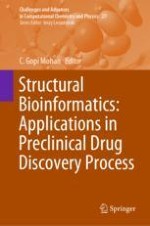2019 | OriginalPaper | Buchkapitel
Combinatorial Drug Discovery from Activity-Related Substructure Identification
verfasst von : Md. Imbesat Hassan Rizvi, Chandan Raychaudhury, Debnath Pal
Erschienen in: Structural Bioinformatics: Applications in Preclinical Drug Discovery Process
Aktivieren Sie unsere intelligente Suche, um passende Fachinhalte oder Patente zu finden.
Wählen Sie Textabschnitte aus um mit Künstlicher Intelligenz passenden Patente zu finden. powered by
Markieren Sie Textabschnitte, um KI-gestützt weitere passende Inhalte zu finden. powered by
